




API (Application Programming Interface) integration allows different software applications to exchange information seamlessly—and that matters a lot for Internet Service Providers (ISPs).
Consider this scenario: A new subscriber signs up via your mobile app, their account is created in your billing system, the network gateway provisions their service, and the CRM logs the sale—all in real time. Without API integration, this flow involves manual steps, delays, errors, and lots of overhead. With it, everything happens automatically.
For ISPs, that means faster onboarding, fewer customer issues, lower operational costs, and better scalability. As access technologies diversify (fiber, WiFi 6/7, fixed-wireless, IPTV, OTT), the number of connected systems grows—but so does the need for smooth, automated data flow. API integration isn’t just “nice to have”—it’s a competitive necessity.

At its simplest: application A sends a request, application B responds. Under the hood, there are a few key elements:
In practical terms for ISPs: your customer portal might call an API to create a subscriber record; your billing engine might call another API to update plan status; your network controller might call an API to configure network access. Each of these steps is automated and connected.
For ISPs, choosing the right method depends on scale, variety of systems, and how fast you need to move. As your ecosystem grows (multiple access types, value-added services, OTT bundles), an iPaaS-style approach tends to make the most sense.
API integrations offer a wide range of benefits—here are some key use cases:
Delayed or fragmented integrations cost ISPs far more than just slow processes. They cost growth, customer satisfaction, and innovation. In today’s broadband-hungry world, seamless API integration is no longer optional—it’s mission-critical.
If you’re an ISP looking to scale, diversify services, and reduce operational overhead, make API integration a key pillar of your strategy. It’s the connective tissue that lets all your tools—billing, network, CRM, OTT, payments—work as one.

Click here to learn more.
The broadband era has surged ahead. With streaming, IoT, remote work and fixed-wireless access all increasing, the role of the Broadband Network Gateway (BNG) is more critical than ever. What used to be a fairly straightforward gateway for customer broadband access is now the core pivot in ISP networks — managing subscriber sessions, enforcing policy, enabling new services.
As ISPs and software providers look ahead, it’s timely to review how BNG access models are evolving — what the new models are, why they matter, and what to consider when redefining your architecture.
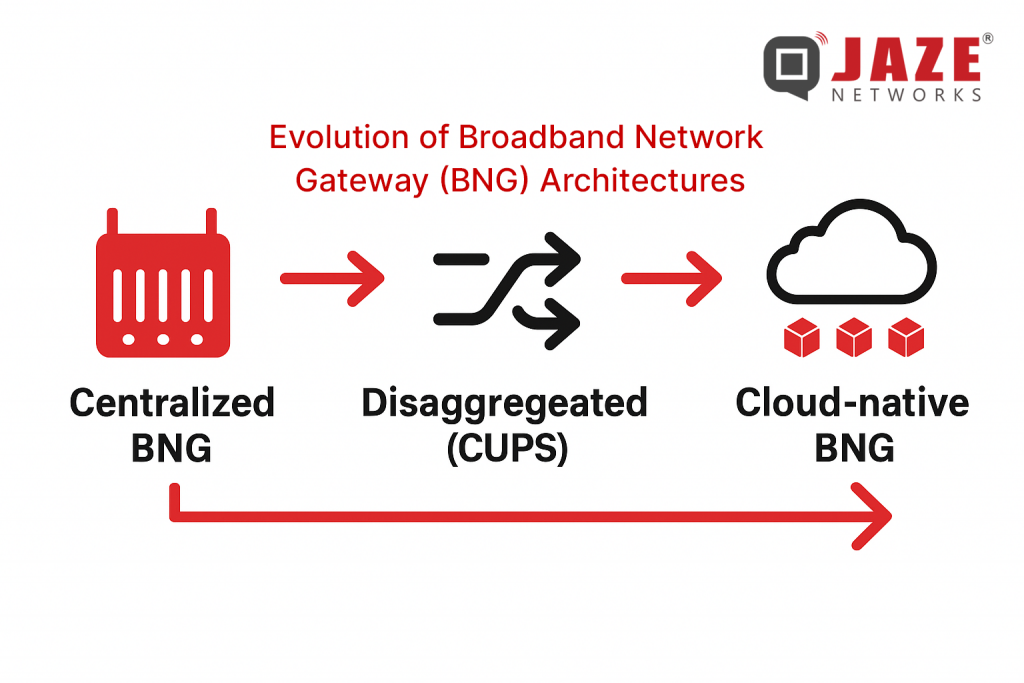
Older BNG architectures were largely built around these characteristics:
However, several shifts are making this traditional model less effective:
Because of this, ISPs must rethink the BNG — the access model, deployment location, and software vs hardware trade-offs.
Here are several access models emerging in the BNG space — useful to understand for product positioning, network architecture or software service strategy:
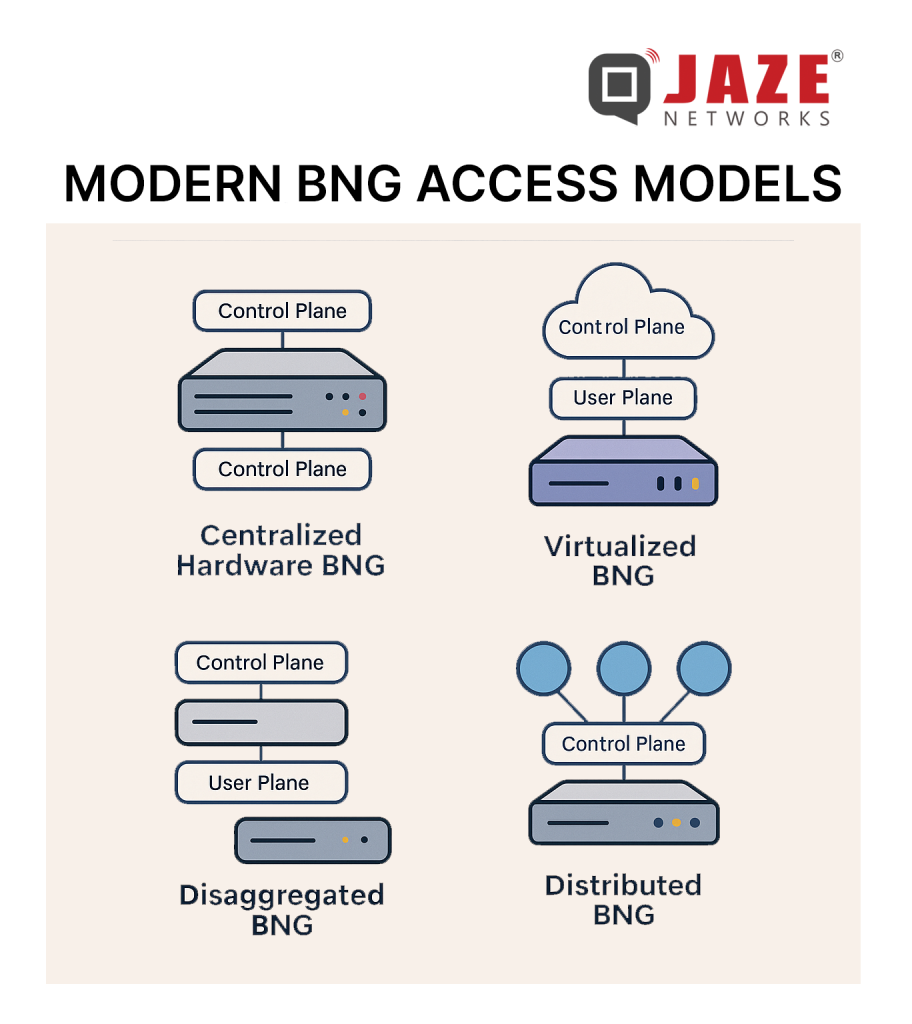
From the vantage of an ISP or a software vendor for ISPs, understanding these access models gives you strategic insight:
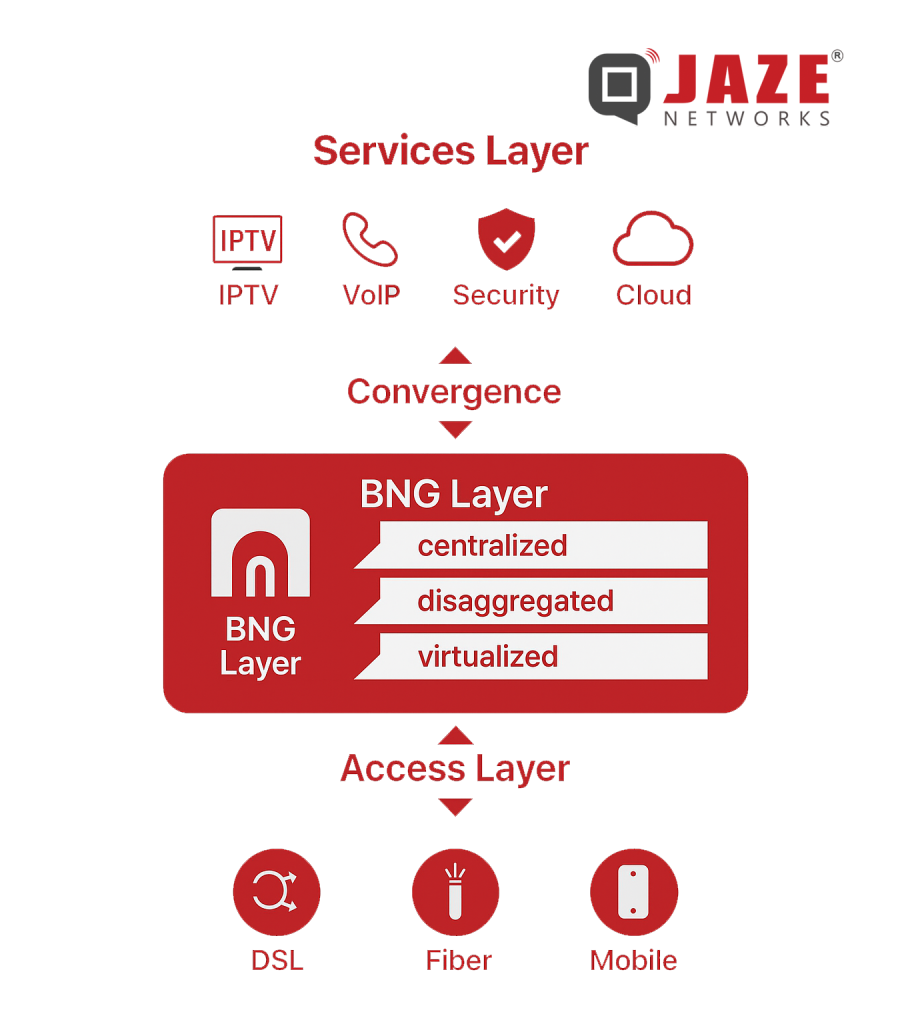
Cost efficiency & scalability: Virtualised/disaggregated BNGs reduce hardware dependency, enable scaling with demand, lower OPEX.
Service agility: Faster introduction of new pricing tiers, service bundles, new access types (FWA, WiFi) — software control matters.
Operational simplicity: Central control plane means fewer edge-appliances to manage; disaggregation means upgrades, scaling becomes less disruptive.
Edge performance & user experience: With distributed user plane, latency and backhaul loads are reduced, supporting high-quality real-time services.
Convergence & future-proofing: Fixed + wireless + multi-access handled by common architecture means ISPs are better positioned for 5G, IoT, edge-services.
Here’s a quick checklist for ISPs and software vendors to assess their BNG strategy:
Subscriber scale & growth: Can the model scale out linearly with subscriber growth and traffic loads?
Access diversity: Will your access types (fiber, FWA, WiFi) be supported under the model?
Control vs user plane location: How decoupled are they? Where will user plane be located for optimal performance?
Software orchestration & automation: Are provisioning, policy, subscriber lifecycle fully automated?
Service agility: How quickly can new tariff plans, bundles, access services be introduced?
Hardware dependency: What is the capex/opex trade-off? Can you move toward software-defined alternatives?
Edge readiness & latency: If you support real-time or OTT services, is your user plane close enough to the edge?
Vendor ecosystem & integration: Does the solution support open interfaces, multi-vendor, easier upgrades?
Whether you go for a centralised appliance, a virtualised cloud-native gateway, a disaggregated CUPS architecture or an edge-distributed model — the common theme is flexibility, software-first, multi-access readiness and subscriber-centric policy control. For ISPs and the SaaS companies that serve them, aligning your strategy (and your software platform) with these modern BNG access models means you’re not just keeping up — you’re positioning for next-gen broadband services, better user experience and operational advantage.
Jaze ISP Manager offers seamless integration with leading BNG/BRAS platforms — enabling ISPs to manage subscriber sessions, enforce policy across all access types, automate provisioning and billing, and monitor network health from one unified dashboard. Whether you are operating a traditional hardware BNG, moving to virtualised models or adopting a distributed edge architecture, Jaze ISP Manager supports the full lifecycle: from onboarding to churn, with scalability built in.
Click here to learn more.
Fiber to the X (FTTX) is more than just a buzzword; it represents a fundamental shift in how we connect to the digital world. It is the general term for any broadband network architecture that replaces all or part of the traditional metal local loop with high-capacity optical fiber. The “X” in FTTX signifies the various termination points—whether it’s the home (FTTH), building (FTTB), curb (FTTC), or node (FTTN)—each step closer to the end-user dramatically improves the quality of service.
The move to FTTX is driven by fiber optics’ inherent superiority over copper cable, offering unparalleled performance benefits that are critical for modern digital life:
High Bandwidth: Optical fibers can transmit exponentially more data than copper, easily supporting high-speed internet, 4K/8K streaming, and data-intensive cloud applications without bottlenecks.
Future-Proofing: Fiber networks have a remarkably long lifespan and are inherently scalable. Upgrading is often as simple as changing the electronics at the end points, ensuring the network can support ever-increasing data rates for decades to come.
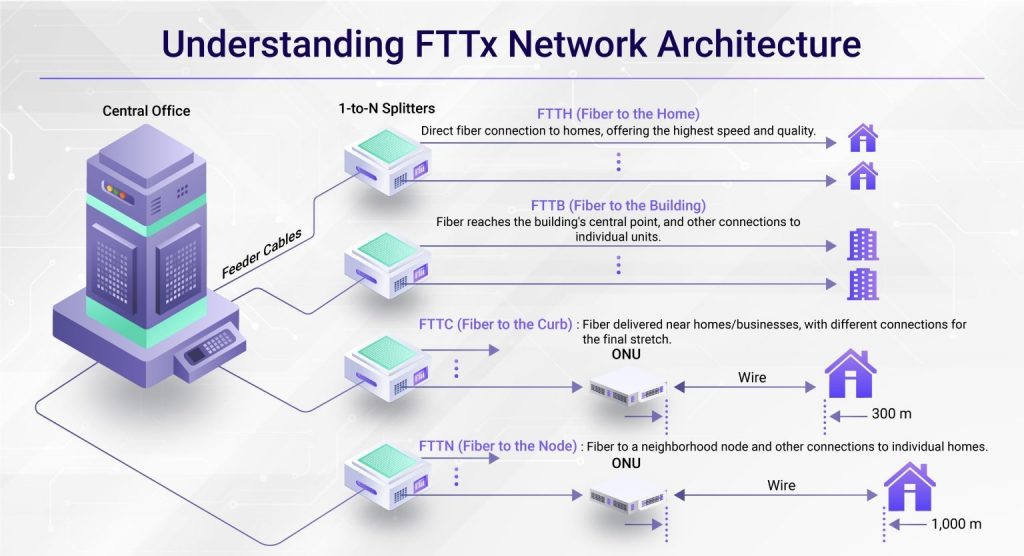
Low Latency: Data transmission via light provides extremely low latency, which is essential for real-time applications like competitive online gaming, high-definition video conferencing, and mission-critical cloud-based operations.
Superior Reliability: Fiber optic cables are immune to electromagnetic interference and less susceptible to environmental factors like moisture and temperature swings, resulting in more stable and consistent service delivery.
Driving Real-World Applications
The deployment of FTTX is fueling innovation across every sector:
Residential Broadband (FTTH): Fiber to the Home delivers the highest speeds and quality directly to consumers, powering smart homes and supporting multiple simultaneous users and high-demand applications.
Business Connectivity (FTTB): Fiber reaches a building’s central point, providing businesses with the reliable, high-speed services crucial for modern operations, data backups, and multi-site connectivity.
Smart Cities & Education: FTTX acts as the nervous system for smart city infrastructure, supporting everything from traffic management to public safety systems. It also enables high-speed connectivity for educational institutions, fostering e-learning and advanced research.
The global adoption of FTTX solidifies fiber as the undisputed standard for modern connectivity. For Internet Service Providers (ISPs) and network operators, the challenge now shifts from deploying fiber to optimizing its operation and managing its subscribers at scale. Success in this new landscape hinges on having a management platform that can handle the sheer volume and complexity of a high-capacity fiber network while streamlining operations.
To truly capitalize on your fiber investment and maximize both network performance and profitability, the path forward requires next-generation intelligence.
With Jaze ISP Manager, you gain a comprehensive, end-to-end operational platform specifically built for the modern fiber provider. This solution transforms operational complexity into seamless efficiency by automating everything from subscriber lifecycle and flexible billing to network provisioning and quality of service (QoS) management.
Don’t let the complexity of managing a large-scale fiber network undermine your competitive edge. Empower your FTTX business with the unified, scalable intelligence of Jaze ISP Manager to guarantee superior quality of experience for your customers and ensure sustainable growth in the fiber-powered future.
When we talk about internet speed, most people instantly think about how fast they can download movies, stream videos, or browse social media. But in today’s world, it’s not just about downloading anymore — upload speed is equally important.
As we step into 2025–2026, when remote work, cloud storage, video creation, and smart devices dominate daily life, upload speed can make or break your digital experience.
Let’s understand why it matters — and how it affects almost everything you do online.
What Exactly Is Upload Speed?
Upload speed refers to how quickly you can send data from your device to the internet.
It’s measured in megabits per second (Mbps), just like download speed.
Every time you:
—you’re using your upload bandwidth.
If your upload speed is low, even a strong download connection can feel sluggish or unstable during these tasks.
1. The Era of Remote Work & Online Collaboration
Work-from-home and hybrid models are here to stay. Every video meeting, shared file, or cloud document relies on your upload connection.
A slow upload speed means blurry video calls, lagging audio, and constant “reconnecting…” messages — not ideal when you’re presenting to clients or attending classes online.
2. Social Media & Content Creation Boom
From influencers to small business owners, everyone is uploading photos, reels, and videos daily.
With 4K and 8K becoming standard, files are huge. High upload speed ensures your videos go live faster — and without frustrating delays.
3. Cloud Storage & Backup
We’re moving away from storing everything on devices. Automatic backups to Google Photos, iCloud, and OneDrive constantly use upload bandwidth.
If upload speeds are low, backups slow down, sync fails, and your data may remain outdated.
4. Smart Homes & IoT Devices
Cameras, sensors, and voice assistants send continuous data to cloud servers.
When upload bandwidth is insufficient, you’ll see camera feed delays, failed device syncs, or unreliable smart automation.
5. Gaming & Live Streaming
Gamers know the pain of lag.Online gaming and live streaming both rely on strong upstream connections — every action, every frame, every voice chat goes out through your upload channel.
Higher upload speeds mean smoother gameplay and crystal-clear streams.
| Online Activity | Recommended Upload Speed |
| Video calls (Zoom, Meet) | 3–5 Mbps |
| Cloud backups | 10–20 Mbps |
| Online gaming | 5–10 Mbps |
| 4K live streaming | 20–25 Mbps |
| Uploading large media files | 25 Mbps and above |
If multiple devices or users share the same connection, you’ll need even higher speeds for a seamless experience.
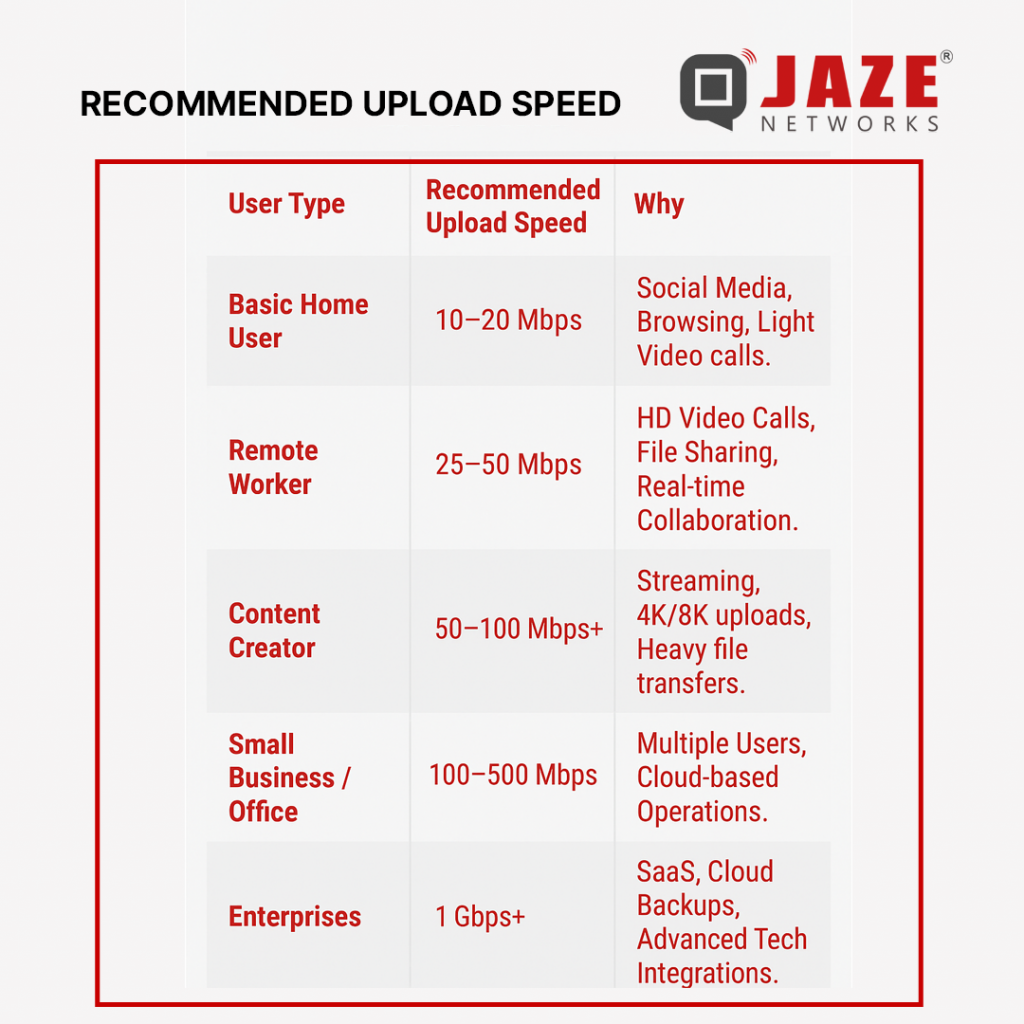
India’s internet usage pattern is shifting fast. Earlier, most users were consumers of content — watching, downloading, or streaming.
But now, millions are creators — students uploading projects, professionals hosting webinars, and entrepreneurs managing online stores.
Unfortunately, many broadband plans in India still prioritize download speeds and offer much lower uploads (often just 10–20% of download rates).
That imbalance is slowly changing, as fiber networks and symmetrical connections become mainstream.
Traditional broadband (like copper or DSL) can’t handle equal upload and download speeds.
But fiber-to-the-home (FTTH) connections deliver symmetrical speeds — meaning if you get 200 Mbps download, you also get 200 Mbps upload.
This makes a huge difference for:
Fiber technology is the backbone of India’s digital growth — and it’s finally bridging the upload gap.
As India embraces a creator-driven digital economy, upload speed is no longer secondary — it’s essential.
Whether you’re working from home, managing an online business, or sharing your creativity with the world, faster upload speeds ensure smoother, smarter, and more reliable connectivity.
Jaze ISP Manager helps ISPs by optimising bandwidth delivery and provide a seamless experience to subscribers. This ensures stable upload speeds for users, reduces congestion during peak hours, and improves performance for video calls, cloud backups, and live streaming. In short, it gives ISPs the tools to maintain reliable upstream performance for their customers. Click here to know more
Real-Time Communications (RTC) — whether video conferencing, live streaming, or VoIP — have become the backbone of modern connectivity. Users expect instant, uninterrupted interaction, and even minor delays can cause frustration. Delivering this level of performance requires more than just fast internet; it relies on understanding Quality of Service (QoS) and Quality of Experience (QoE), and how they intersect.
Quality of Service (QoS) is the technical engine that ensures RTC traffic moves efficiently across networks. Without it, calls drop, video lags, and user frustration rises.
Key QoS mechanisms include:
By controlling these network variables, QoS provides measurable reliability — the foundation for any RTC application.
While QoS handles the network, Quality of Experience (QoE) focuses on how users perceive the service. High network performance doesn’t automatically translate into a satisfying experience if the application is difficult to use or inconsistent.
Factors affecting QoE include:
Measuring QoE often involves subjective feedback, such as Mean Opinion Scores (MOS), surveys, or session success rates.
The most successful RTC experiences occur when QoS and QoE are aligned. Network optimizations (QoS) set the stage, but user perception (QoE) determines satisfaction.
For instance, a video conference may have excellent packet delivery, low latency, and zero jitter — but if users struggle to navigate the app or experience confusing error messages, QoE suffers.
Integrated monitoring of both QoS metrics (latency, jitter, packet loss) and QoE indicators (MOS, user engagement) allows providers to proactively identify problems and enhance the overall experience.
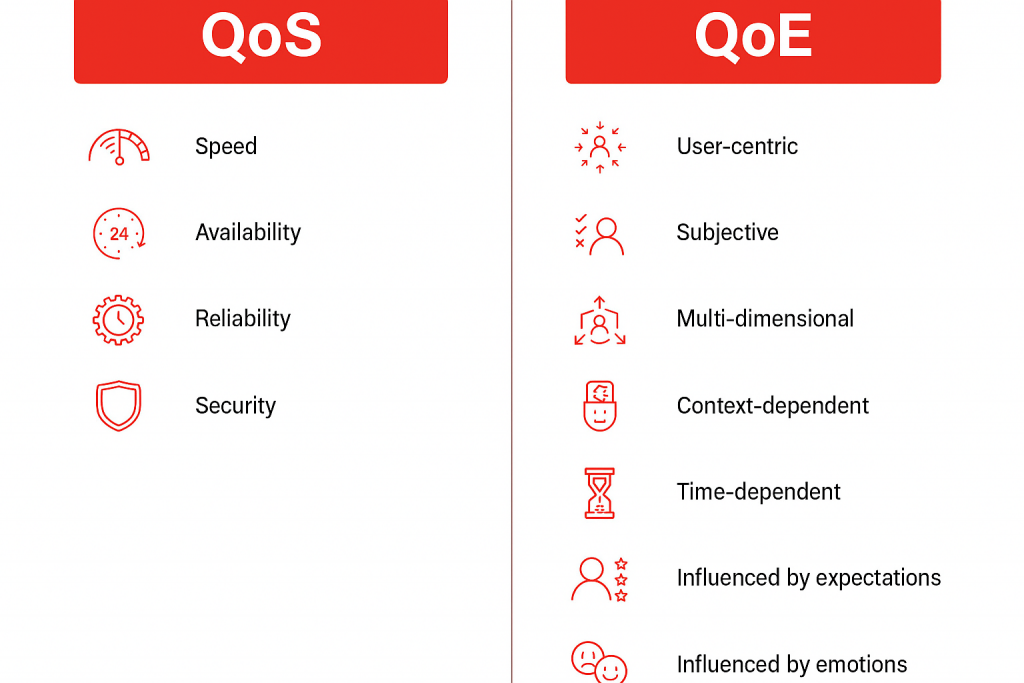
Monitoring the right metrics helps bridge technical performance and user satisfaction:
QoS Metrics:
QoE Metrics:
Tracking both sets of metrics ensures service providers can pinpoint issues, whether technical or user-facing.
These strategies provide measurable improvements in both technical performance and user satisfaction.
In a digital-first world, RTC performance can make or break user experiences. QoS ensures the network can deliver real-time data reliably, while QoE measures the perception and satisfaction of the user. Service providers who monitor, optimize, and balance both aspects will not only prevent disruptions but also build trust and loyalty among their users.
Investing in QoS and QoE is not optional — it’s the foundation for RTC success, whether in business, education, or everyday social interactions.
Jaze ISP Manager becomes critical in this equation. In integration with BNG providers, Jaze ISP Manager automates enforcement of intelligent traffic policies, and provides real-time analytics, empowering ISPs to deliver consistent QoS while keeping QoE at the center. The result: seamless RTC experiences, satisfied subscribers, and a future-ready network that scales effortlessly with demand.
Wi-Fi 7 (IEEE 802.11be) is poised to become a game changer. It brings improvements in speed, latency, reliability, and capacity — all critical for modern digital applications. Here’s a clear look at what’s new, why it matters, and what ISPs and network managers should be doing to stay ahead.
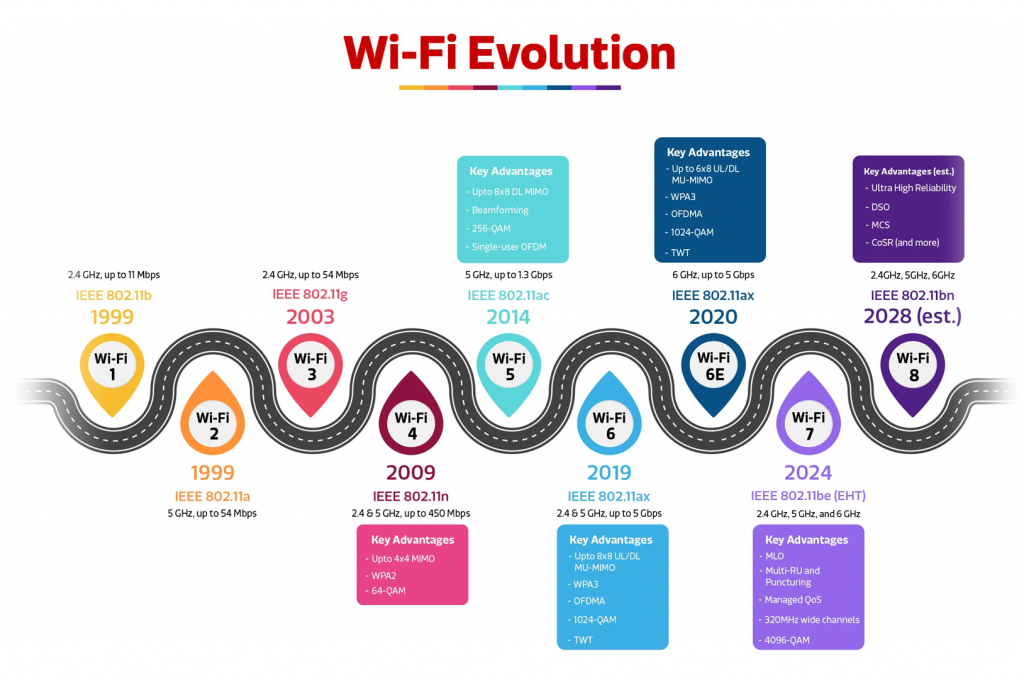
Wi-Fi 7 isn’t just an incremental upgrade — it’s a leap toward connectivity that meets the demands of tomorrow.
Jaze Networks helps businesses and service providers manage users on Wi-Fi networks and deliver seamless Wi-Fi experiences to end-users.
Jaze Access Manager provides solutions in integration with all lead wireless equipment manufacturers to deliver customized on-boarding workflows, granular policies for Wi-Fi Access through AAA and logging for compliance.
Click here to know more on Jaze Access Manager.
Internet Service Providers (ISPs) and enterprises face mounting pressure to secure their networks while ensuring seamless user experiences in the fast-paced digital era. The Authentication, Authorization, and Accounting (AAA) framework provides a structured approach to manage network access, prevent misuse, and maintain compliance.
AAA stands for:
Together, these three processes create a reliable system that ensures only the right people get the right level of access—while all activities are logged for accountability.
Unauthorized access can lead to service abuse, downtime, and regulatory risks. AAA protocols ensure only verified users connect to the network, reducing threats from both external attackers and internal misuse.
With authorization policies, ISPs can assign access levels based on roles—customers, staff, or partners—ensuring sensitive systems remain protected.
Accounting helps providers monitor how network resources are used. For ISPs, this is especially valuable for bandwidth management, billing accuracy, and detecting unusual traffic spikes.
Governments and regulators demand traceability of network activity. Accounting logs serve as digital evidence to meet compliance requirements and reassure customers about data security.
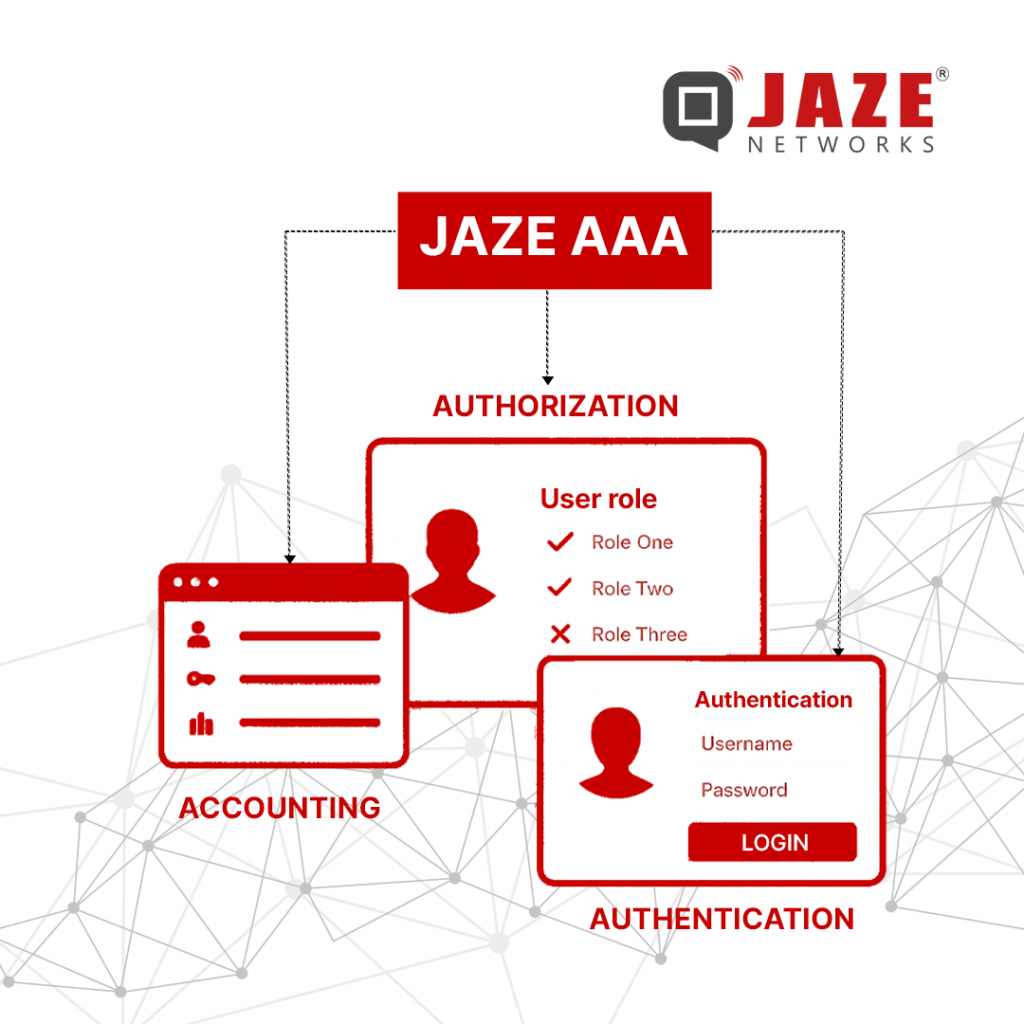
Different protocols implement AAA in unique ways. Here are the most widely adopted:
For ISPs and large businesses, a well-structured AAA setup is critical. The implementation usually involves:
To get the most out of AAA frameworks, operators should:
As ISPs expand services into fiber, 5G, and enterprise networking, the demand for scalable, automated AAA systems will only grow. Cloud-native AAA platforms are already emerging, offering flexibility and real-time policy enforcement across distributed infrastructures.
For ISPs and enterprises alike, AAA is no longer optional—it’s the foundation of secure, reliable, and accountable network access. By choosing the right protocols, enforcing strong access policies, and embracing best practices, operators can strengthen security, streamline operations, and build customer trust.
Jaze ISP Manager delivers carrier-grade AAA with centralized authentication, authorization, and accounting to secure broadband, enterprise, and public access networks. It integrates seamlessly with RADIUS and TACACS+ for subscriber management and device administration across distributed infrastructures.
ISPs can enforce role-based access policies, streamline user onboarding, and ensure compliance with regulatory requirements. Built-in redundancy guarantees high availability, while real-time accounting provides transparency for usage, billing, and auditing. By combining automation with AAA architecture, Jaze enables operators to deliver uninterrupted connectivity, faster troubleshooting, and reliable service at scale.
Click here to know more
India’s digital transformation has been one of the most significant global stories of the past decade. With over 820 million internet users, the country has emerged as a digital-native economy, despite having a GDP per capita of just over $2,700. While many countries transitioned gradually from desktops to smartphones, India skipped a few steps—embracing mobile-first access from the start.
This shift isn’t just about personal connectivity—it’s reshaping how industries operate, especially the business events sector. To stay relevant and future-ready, industry players must understand the implications of India’s digital adoption and build strategies around it.
India’s digital growth is powered by affordable smartphones and low-cost data plans, making internet access more democratic and widespread.
This has created an environment where digital content, platforms, and tools are more relevant than traditional, hardware-intensive solutions.
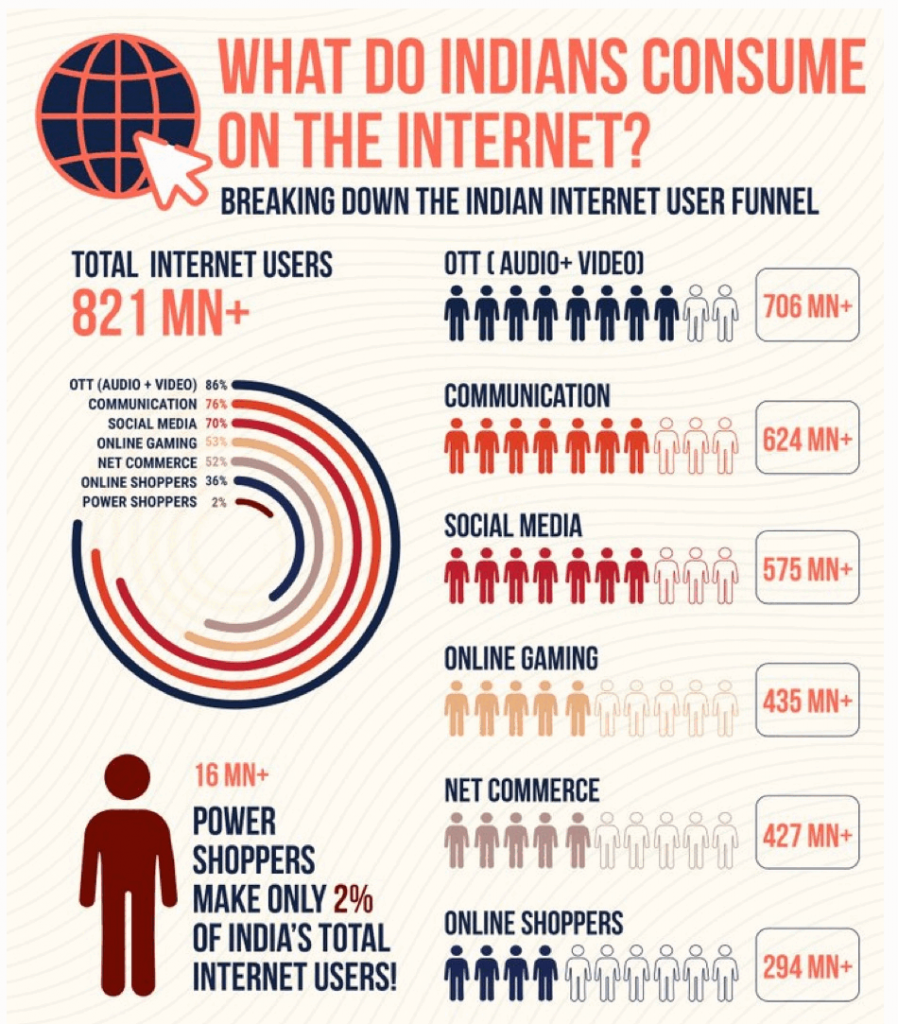
The nature of India’s digital access changes how audiences engage with content and events. Traditional formats no longer suffice. Instead, digital-first strategies must become central to event planning, marketing, and execution.
Here are three key ways the business events industry can evolve:
Event organisers must think beyond the physical venue. With millions of people accessing content via mobile phones, the potential reach is enormous—if content is tailored and distributed effectively.
Modern venues must support more than Wi-Fi. They need to enable seamless content creation, hybrid streaming, and sustainable practices powered by digital infrastructure.
Vendors—whether tech providers, production partners, or logistics firms—play a crucial role in helping organisers and venues bridge the digital gap.
To build an inclusive, sustainable events industry in India, stakeholders must experiment with digital technologies at every level—from promotion and operations to post-event analysis.
India’s digital-first population presents an incredible opportunity—but only for those prepared to adapt. Organisers, venues, and vendors must rethink their roles and responsibilities in a mobile-led world. By embracing digital tools, supporting inclusive infrastructure, and prioritizing sustainability, the business events industry can truly evolve to serve India’s next billion internet users.
As digital connectivity becomes central to every industry, Internet Service Providers must modernize how they operate.
Jaze ISP Manager helps ISPs manage their broadband business with ease—offering automated customer support, real-time network monitoring, intelligent fault detection, and direct revenue sharing between franchises. It’s a complete solution designed to improve reliability, simplify operations, and support scale, especially in mobile-first markets like India.
Click here to know more.
AI in customer service often gets hyped up as some magical replacement for human effort. But the reality is more grounded—and more useful. Instead of replacing agents, AI can actually amplify what people do best, while clearing away the mundane.
This blog takes a clear-eyed look at how AI is being used in support workflows—not just for automation, but for improving speed, empathy, quality, and customer satisfaction.
Let’s dive into how AI can empower support teams, not erase them.
Let’s start with the obvious: customers today expect fast, consistent, and helpful service across every channel—chat, email, social media, calls, and more. Meanwhile, businesses struggle to keep response times low, costs manageable, and agents happy.
That’s where AI steps in. It offers three major superpowers:
Speed – Instant responses, smart routing, and real-time data fetching.
Scale – Handle thousands of queries across platforms, 24/7.
Smarts – Analyze tone, predict next steps, suggest responses.
But here’s the important part: AI should be used to support humans, not sideline them. Let’s explore how.
From resetting passwords to order tracking, customers often ask the same things over and over. AI chatbots and voice assistants can instantly handle such routine queries—giving your team breathing room to handle real problems.
✅ Use Case: A customer asks, “Where’s my order?”
The bot fetches tracking info. If the order is lost or damaged, the case gets escalated to a human for a thoughtful resolution.
2. Boost Agent Efficiency with Real-Time Assistants
Modern AI tools work behind the scenes—they’re not just chatbots. These assistants can suggest replies, fetch relevant info from internal knowledge bases, and even summarize past conversations so agents can jump in fully informed.
✅ Use Case: An agent opens a ticket, and AI surfaces product history, sentiment scores, and the last conversation thread instantly—no digging required.
3. Use AI to Learn and Adapt from Customer Sentiment
AI doesn’t just listen—it can understand tone, detect frustration, and flag when a conversation is going south. Sentiment analysis helps route urgent cases to senior agents or alert supervisors.
✅ Use Case: A chatbot notices increased negative sentiment in conversations around a new product. It alerts the product team to investigate.
4. Deliver Personalized Experiences at Scale
AI thrives on data. When used well, it can tailor responses based on past interactions, preferences, and behavior—creating the sense that every customer is getting VIP treatment.
✅ Use Case: A returning customer contacts support. AI recognizes them, knows their preferred language, past purchases, and routes them to the right agent with all context attached.
5. Streamline Internal Workflows with AI
Support teams often struggle with ticket management, tagging, and handoffs. AI can auto-tag issues, prioritize tickets, and even auto-draft responses based on templates—so nothing slips through the cracks.
✅ Use Case: After a customer finishes a chat, AI auto-tags the issue (“Billing > Refund Request”), assigns priority, and recommends next steps—all before an agent sees it.
6. Train Better Teams, Faster
AI can analyze thousands of conversations to highlight what your top performers do differently. It can surface coaching moments, suggest training content, or even roleplay practice conversations for new hires.
✅ Use Case: A team lead reviews weekly AI-generated performance summaries. They notice that agents using empathetic phrases resolve cases faster—training is adjusted accordingly.
AI isn’t a magic wand. You still need to:
A good rule: if a conversation requires judgment, emotion, or negotiation, a human should always be in the loop.
You don’t need the flashiest AI system. You need the right mix of automation and empathy.
Want to see how AI can actually work for your customer support. Jaze ISP Manager offers a full-stack customer management platform built for ISPs and network providers. From intelligent ticketing workflows to subscriber self-service portals, it’s designed to reduce your support load while improving customer experience.
With Jaze ISP Manager, you can:
In an era where streaming, video conferencing, and real-time gaming dominate digital activity, most users still equate better internet with higher bandwidth. But the real indicators of network quality lie deeper—in factors like latency, jitter, and bufferbloat. Understanding these metrics is essential to achieving consistent, high-quality connectivity.
While bandwidth defines the maximum data transfer capacity, it doesn’t ensure consistent delivery. Think of bandwidth as the width of a pipe, not the speed or smoothness of water flow. High bandwidth with unmanaged latency and jitter can still lead to poor Quality of Experience (QoE).
Latency measures the round-trip time data takes to travel between a device and a server. High latency creates noticeable delays, especially during:
Solution:
Jitter represents fluctuations in packet arrival times, which leads to data arriving out of sync. This is particularly disruptive for time-sensitive applications like:
Solution:
Bufferbloat occurs when network devices over-buffer packets, introducing delay and congestion even when bandwidth is not fully utilized.
Symptoms include:
Solution:
While a fast connection helps with large file downloads or 4K streaming, real-time communication depends more on network consistency than on raw speed.
Best Practices:
For ISPs and enterprise network managers, focusing solely on delivering higher speeds is no longer sufficient. Real competitive advantage lies in offering:
Maximizing internet performance isn’t about bandwidth alone. To truly optimize the end-user experience, network administrators and users alike must address the hidden factors—latency, jitter, and bufferbloat—that directly influence application responsiveness and reliability.
Investing in smarter infrastructure, performance-aware configurations, and end-to-end visibility will ultimately provide a smoother, faster, and more predictable network experience for all users.
To improve Quality of Experience (QoE) beyond just bandwidth, Jaze ISP Manager equips ISPs with meaningful insights into subscriber usage.
Jaze ISP manager in integration with BNG routers supporting FQ-CODEL based AQM helps to optimize the quality of experience effectively managing latency, jitter, and bufferbloat.
Click here to know more.